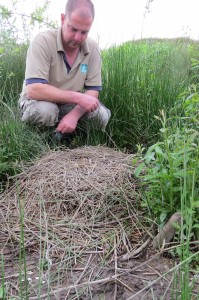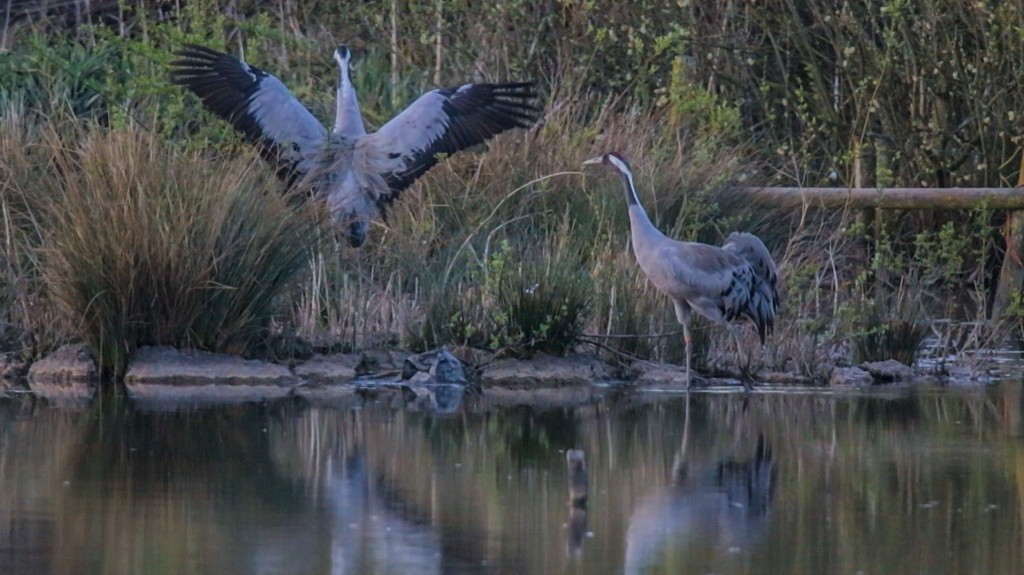Young crane pair loses chick


The first wild crane egg in Western Britain for four centuries has hatched at Slimbridge Wetland Centre in Gloucestershire. But sadly the chick hasn't survived its crucial first couple of days.
WWT staff and volunteers guarding the nest against egg thieves reported two fleeting glimpses of a chick next to its mother on 26 May. During the ensuing days of rain, the parents – Chris and Monty - continued to sit on the nest until abandoning it on Friday 31 May.
Experts inspected the nest, once certain the parents would not return, and found the remains of the hatched shell but no sign of a chick. The cause of death cannot be determined but may have been due to the bad weather or a predator.
WWT’s Nigel Jarrett said:
“We’re disappointed the chick did not survive, but are very impressed this crane pair has shown strong parenting instincts, despite being just three years old.
“We didn't actually expect them to start breeding for another couple of years, but Chris and Monty built a substantial nest, laid a fertile egg and worked together fantastically to keep it warm and safe against marauding gulls, for over four weeks.
“They obviously have a strong bond and with this years’ experience, it’s odds on they’ll raise the first wild crane chick next summer.”
Hunting and the loss of wetlands drove Britain’s once-common cranes to extinction around 400 years ago. The Great Crane Project has been reintroducing cranes to the Somerset Levels and Moors since 2010. By reintroducing 100 birds to Somerset over five years, the Great Crane Project aims to establish 20 breeding pairs. From these the crane population will grow and spread, eventually joining with other cranes from eastern Britain.
The Great Crane Project is a partnership between WWT, the RSPB and Pensthorpe Conservation Trust with major funding from Viridor Credits Environmental Company, who share the vision to return this beautiful bird to where it once belonged.
